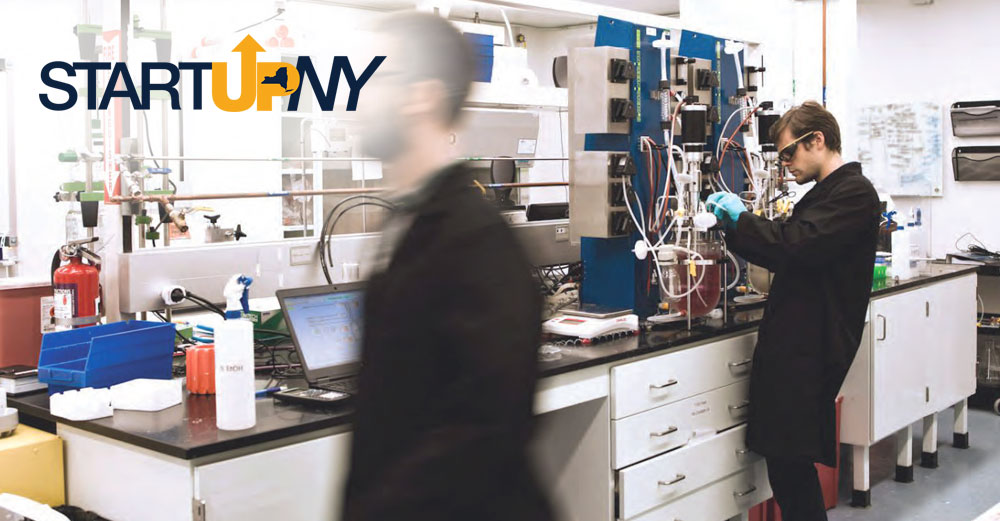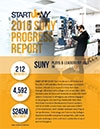
In 2014, innovative legislation was passed to bring to New York new ways to start and grow businesses across the state. START-UP NY (SUNY Tax-free Areas to Revitalize and Transform Upstate NY) was started. The initiative was set up to encourage businesses to start, relocate to or expand in New York State through partnerships with SUNY colleges and universities in return for significant tax benefits and the ability to leverage the valuable intellectual and physical assets of their partners in higher education. The program has just recently passed two years in operation, and the good news at the campus level is growing more and more.
To this point, half of all SUNY schools have now sponsored START-UP NY businesses, with notable increases occurring at our Comprehensive, Technology and Community Colleges. And the benefits and success they are seeing are large, varied, and continuously growing. These businesses are spread across a multitude of industries, including information technology, biotech & life sciences, industrial/manufacturing, and food & agriculture, that add up to more than 200 approved partnerships in the program. All of these benefits have allowed schools to realize a richer and more substantial array of gain from the START-UP NY partnerships.
The benefits of the START-UP NY program extend well beyond financial. Students see new opportunities become available to them right from campus. Nearly every START-UP company is offering some type of experiential learning opportunity. During 2016, 134 SUNY students received internships at START-UP NY businesses. With every new partnership, the internships that become available put SUNY students first-in-line for recruitment and hiring into full-time positions after graduation. In fact, 121 SUNY graduates went to work for START-UP NY companies in 2016.
As the program continues to expand, more and more opportunity will become available for students, workers, and entrepreneurs all across New York State. Until then, you can learn more about the success of START-UP NY in 2016 in the Progress Report.




